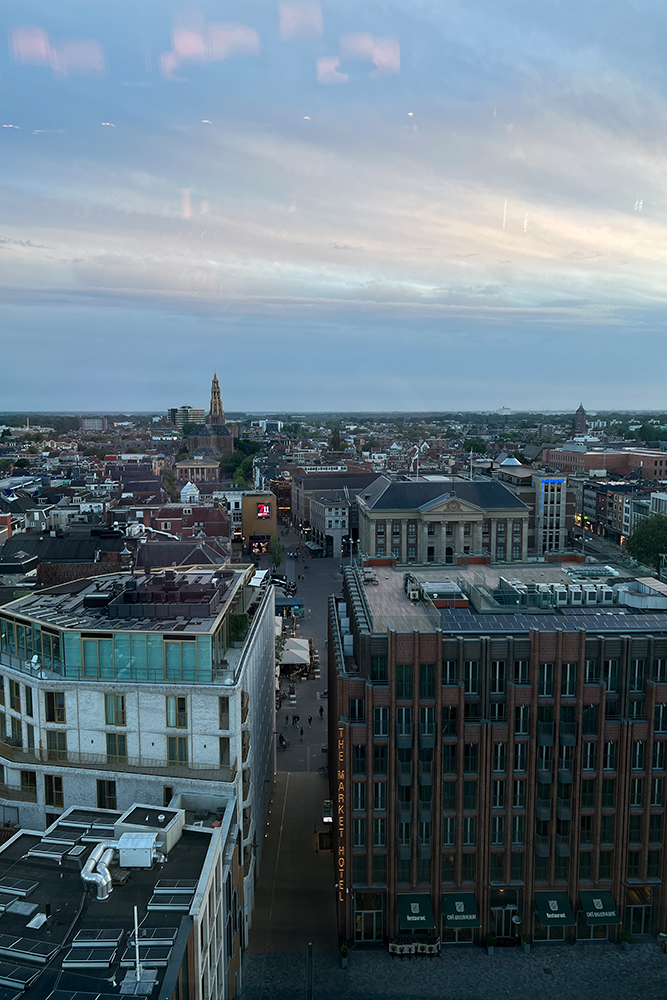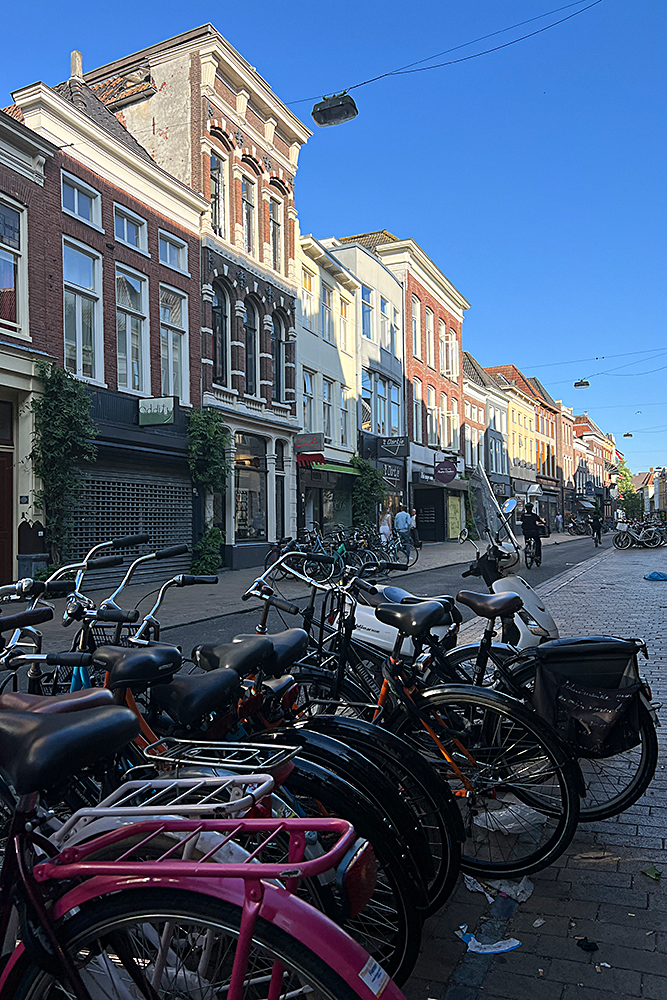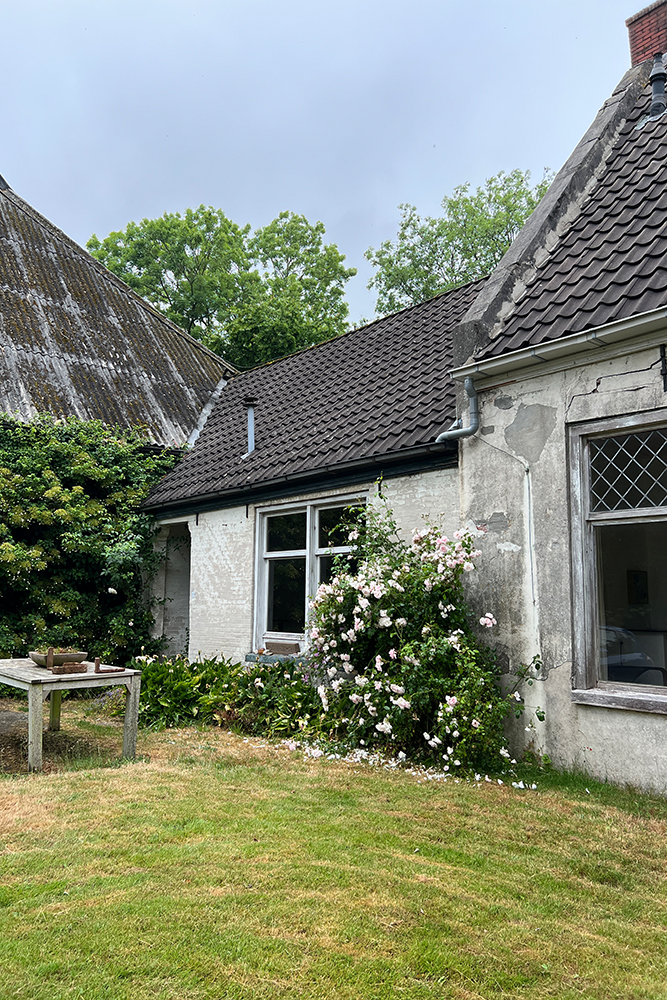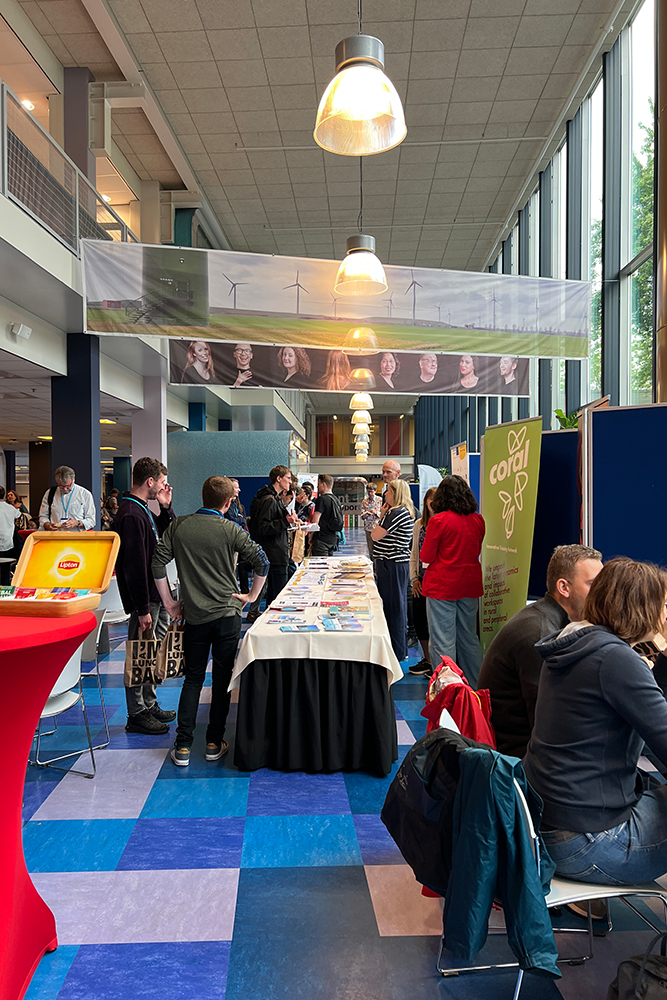“New and old architectures merge here” Future City Goes Global: With Chantal Karadag in Groningen
What will the liveable city of tomorrow look like? In order to find answers to this question, scientists from the core research area “Future City” are exchanging ideas with researchers from all over the world. In the series “Future City Goes Global” they take us to other cities, show differences and similarities and report on planned research collaborations. Chantal Karadag from the ISU – Institute for Sustainable Urbanism was recently at the European Rural Geographies Conference in Groningen, the Netherlands, and reported on her stay there.

Chantal Karadag with three editions of the book “Metapolis. Topoi. Scenarios for Urban Rural Sustainability in Lower-Saxony” published in October 2022. Photo credit: ISU/TU Braunschweig
What was the reason for your trip?
In June 2023, I attended the “European Rural Geographies Conference” in Groningen, the Netherlands, to present recent results of the SpACE Lab at ISU‘s research in urban-rural relations. The focus was on our recently published monograph entitled “Metapolis. Topoi. Scenarios for Urban-Rural Sustainability in Lower Saxony”. At the same time, I had the fantastic opportunity to engage in discussions with international researchers on the topic of change in rural regions.
Which were the main research topics during your stay?
Under the title “Rural Geographies in Transition”, we discussed research, methods and perspectives on topics such as population development, socio-spatial inequalities, governance and politics, economic challenges, quality of life, smart villages, landscape change, urbanisation, entrepreneurship in rural areas, changes in agriculture, housing in rural areas, energy transition and adaptation to climate change.
What impressed you the most in the city?
My personal highlight in Groningen was seeing how new and old architecture merge—for example, the integration of new buildings like the “Forum Groningen” by NL Architects in the context of the old town development. The facilities at the University of Groningen in terms of technical equipment, air conditioning and lighting of the rooms were very impressive. I was also pleasantly surprised by the landscaping and public spaces on the campus: the relationship to water and greenery is omnipresent in the Netherlands, including on the university grounds. Due to the Imperial University of Groningen and the Hanze University of Applied Sciences Groningen, the city is very attractive for students. Many bars are therefore open around the clock.
Part of the conference were excursions to the immediate surroundings of the city of Groningen to visit real projects, already implemented or still planned, on the focus of the conference. I was lucky enough to take part in the excursion to citizens’ initiatives to improve the quality of life in Friesland and Groningen. We visited a conversion of a church into a community centre with a kindergarten in Anjum, financed by private and donated funds, and a community project for the care and recreation of senior citizens, children and young people in Kloosterburen.
The connection to water and greenery is omnipresent in the Netherlands, including on the university campus.
It was amazing to see how and to what extent the citizens’ initiatives organise themselves and what they get going on their own, as well as how important they are for the changing society in rural areas. Change here describes, on the one hand, general improvement and an increase in the attractiveness of the living conditions and infrastructure in the countryside, especially in the sense of sustainability, but on the other hand also the migration of the population to the city and the associated loss of institutions and social contacts.
What makes this city special? What could we adopt for German cities?
Groningen is an old city in the north of the Netherlands, capital of the province of Groningen and, with 240,000 inhabitants, about the size of Braunschweig. My impression was that the city centre is very well connected by short distances, but also by the dense city bus network, as the city centre is concentrated in the area inside the former city moat.
The traffic lanes are designed in such a way that all types of transport can make equal use of the space on the roads.
The safe coexistence of different modes of transport such as cycling, walking, public transport and cars in one space was impressive: the traffic lanes are designed in such a way that all types of transport can make equal use of the space on the roads. That the bicycle is the preferred means of transport is nevertheless clearly noticeable. Unlike in many German cities, the focus in transport planning is obviously not on the car.
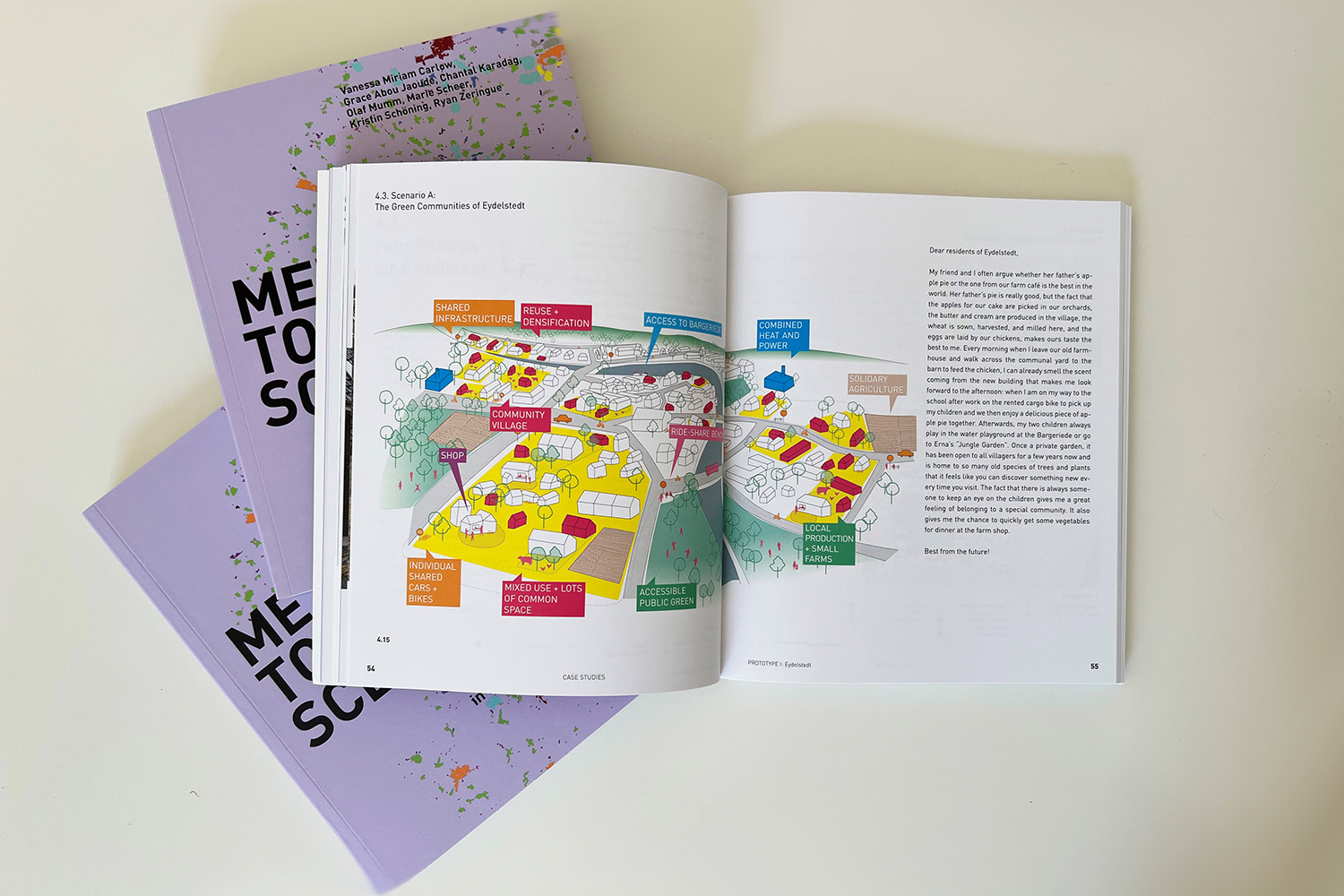
The opened copy of the publication shows one of the four future scenarios for the Eydelstedt prototype in Lower Saxony. Photo credit: ISU/TU Braunschweig
What is the number one means of transport in the city?
Typically Dutch—the bicycle.
What research collaborations are planned?
Many interesting contacts were made during the conference, which we will continue to develop as the SpACE Lab at ISU—both nationally and internationally. I was able to exchange ideas with doctoral students from various European universities. A publication of the contributions is planned.

